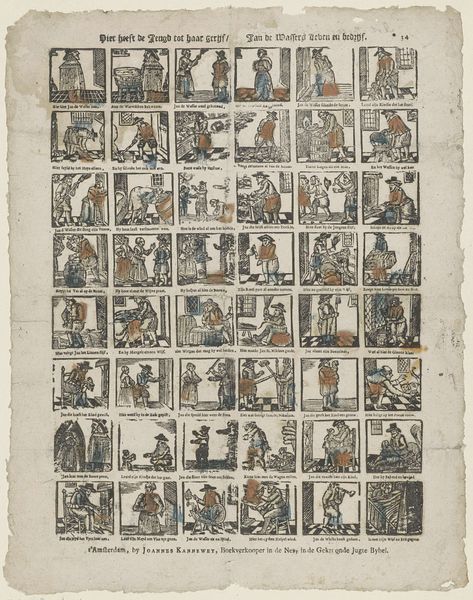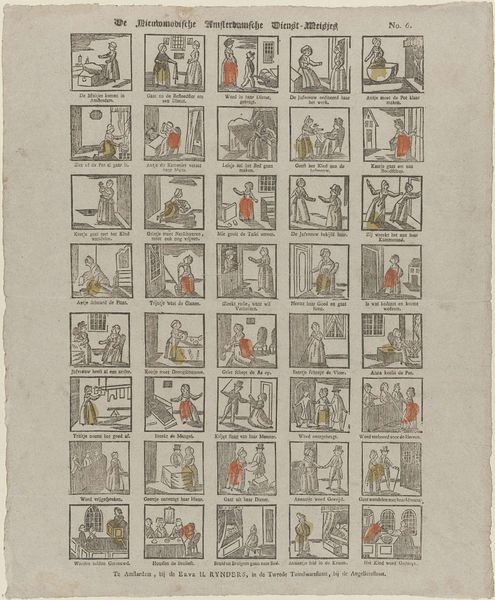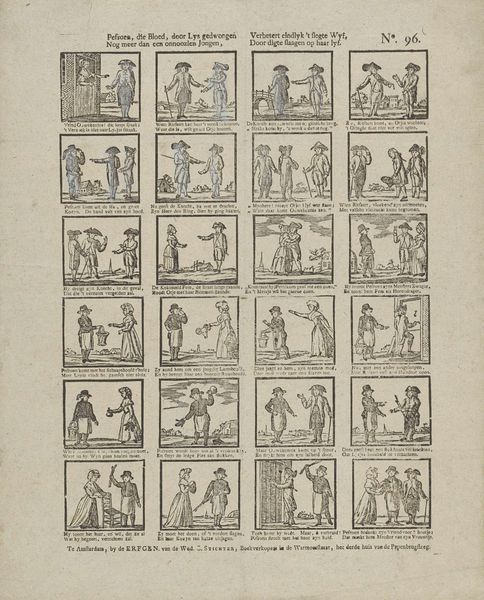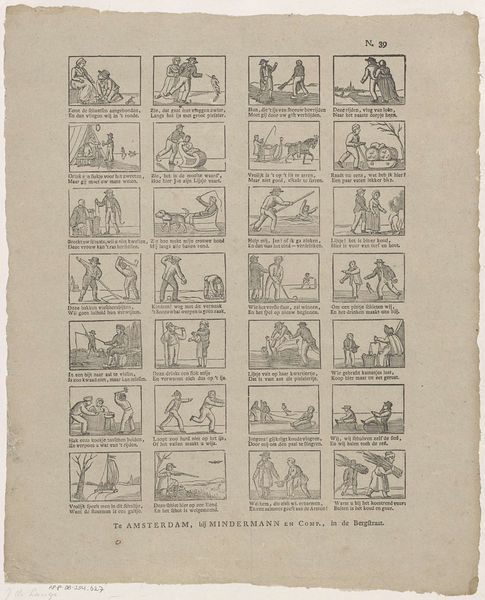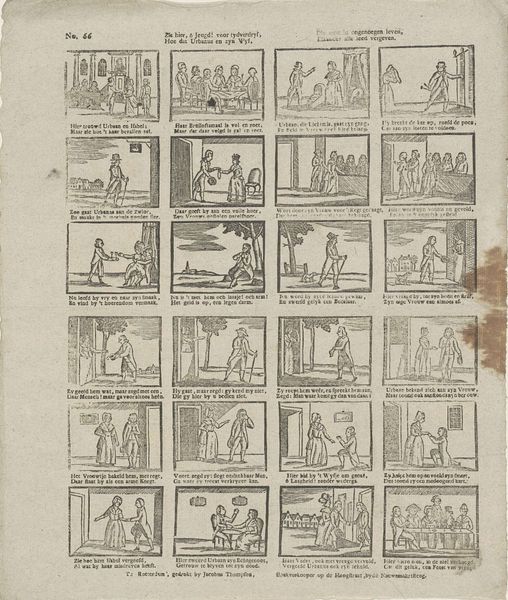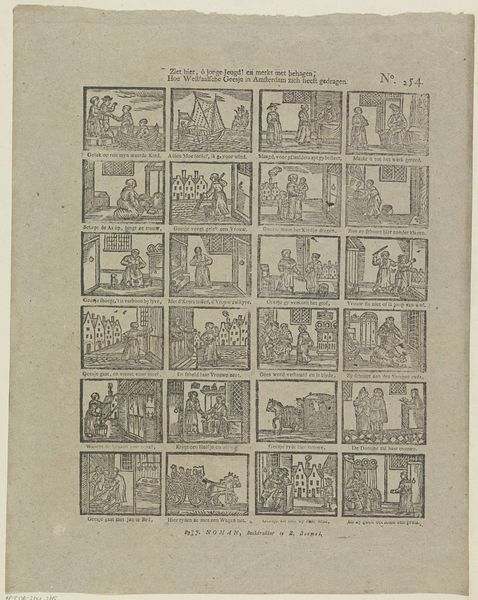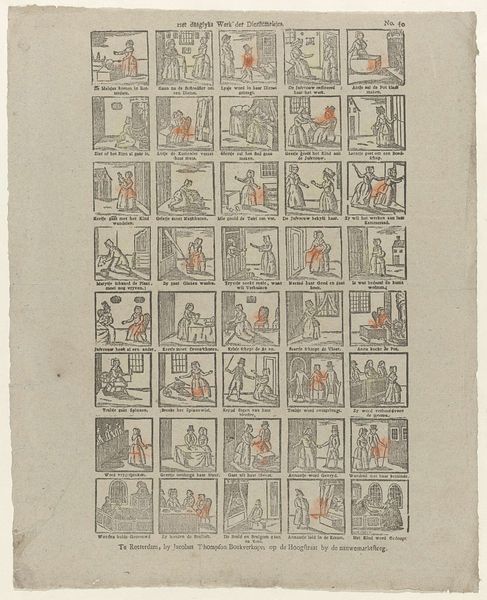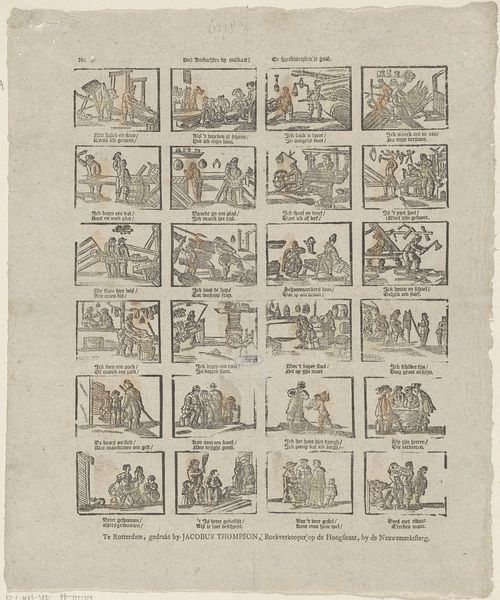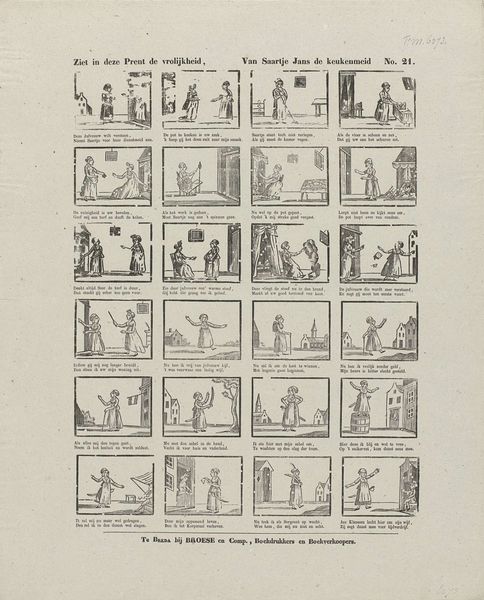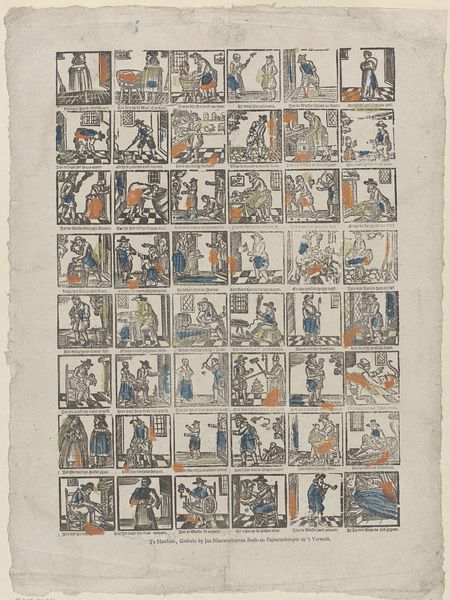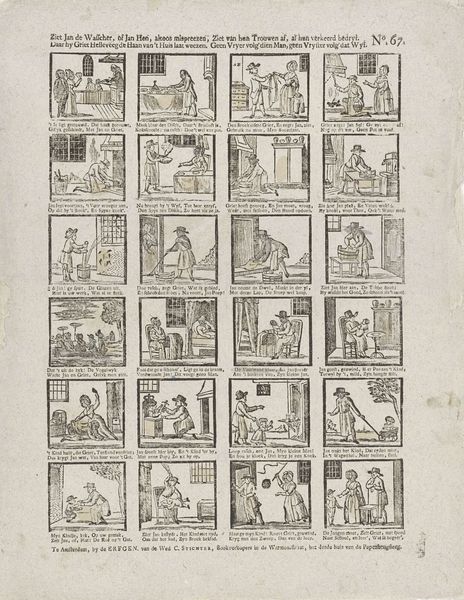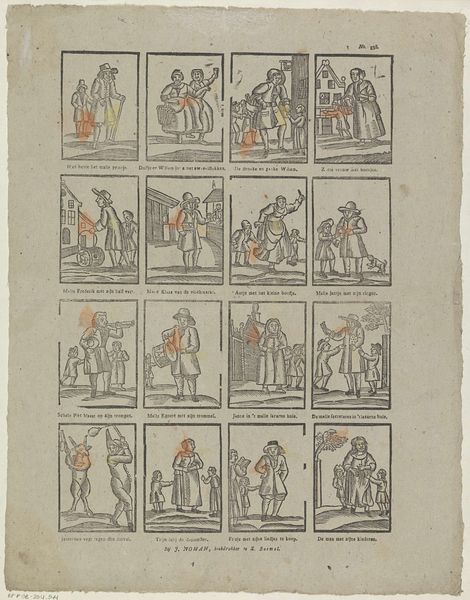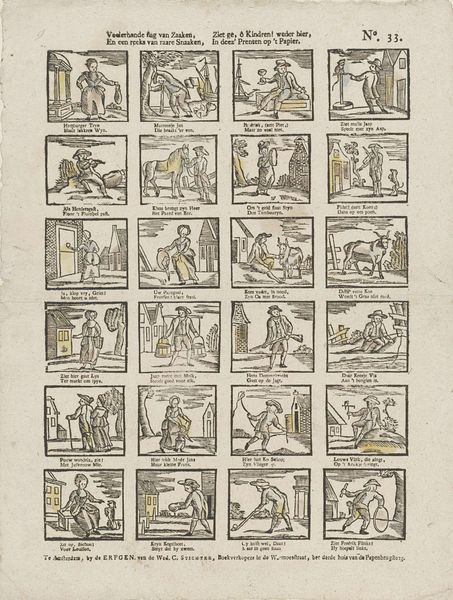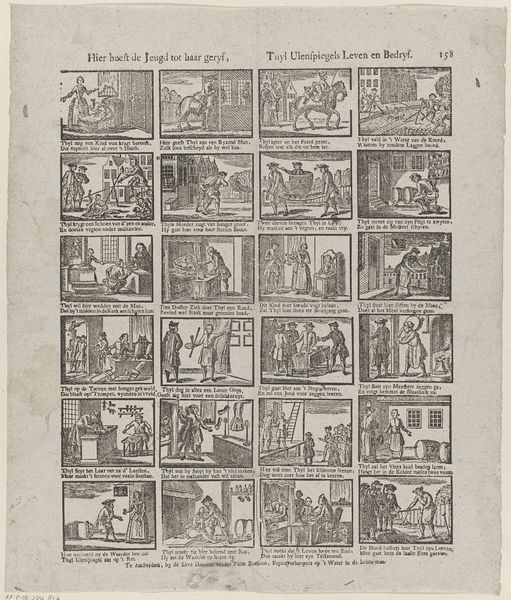
print, engraving
#
comic strip sketch
#
aged paper
#
quirky sketch
#
narrative-art
#
dutch-golden-age
# print
#
old engraving style
#
personal sketchbook
#
sketchwork
#
pen work
#
sketchbook drawing
#
genre-painting
#
storyboard and sketchbook work
#
sketchbook art
#
engraving
Dimensions: height 409 mm, width 312 mm
Copyright: Rijks Museum: Open Domain
Curator: Here we have "Het daaglyks werk der dienst-meisjes," or "The Daily Work of the Maids," a print made sometime between 1789 and 1826 by Johannes Scheffers. Editor: It’s fascinating! My immediate impression is of a storyboard or a series of vignettes, capturing the essence of a working woman's life, and a hard one, judging by her busy agenda, from the moment she rises to when she puts a child to sleep in a bassinet. Curator: Precisely. Looking at this from a material perspective, the engraving technique would have allowed for relatively quick and cheap reproduction. This speaks to its intended audience—presumably not the wealthy, but perhaps aspiring middle-class households who employed domestic staff and wanted to monitor their work! Editor: Or perhaps it's a subtle commentary on the social hierarchy, making visible the often invisible labor that sustains those middle-class households. Think about it, each tiny scene portrays a power dynamic, an interaction steeped in inequality. Curator: I'm also thinking about the repetitive labor represented—the endless cleaning, carrying, caring. These women were essentially the engines driving the household economy. Without their physical exertion, the family's productive forces come to a halt. It really makes you consider what they would consume, what were they wearing, what they get to eat, and so on. Editor: Right, we see snippets of their days but not a hint about their interior lives. The stories behind each panel are unwritten and unheard—their agency is minimal as rendered here, as each tiny framed illustration speaks volumes about gendered work. It really emphasizes that the world they lived in demanded compliance and toil. Curator: The use of print also means the artwork was intended to be accessible. This contrasts sharply with, say, an oil painting, where the exclusivity of the medium contributes to an aura of preciousness and uniqueness. The purpose here is for multiple dissemination. Editor: And who decides which labor and lives should be illustrated, copied and disseminated this way? If we had more information, we could perhaps read deeper and look closer into the narratives left behind! Curator: It is certainly work asking what's absent is also important when evaluating these kinds of pieces! Editor: I’ll definitely be looking at Dutch Golden Age pieces with new eyes, after this analysis!
Comments
No comments
Be the first to comment and join the conversation on the ultimate creative platform.
